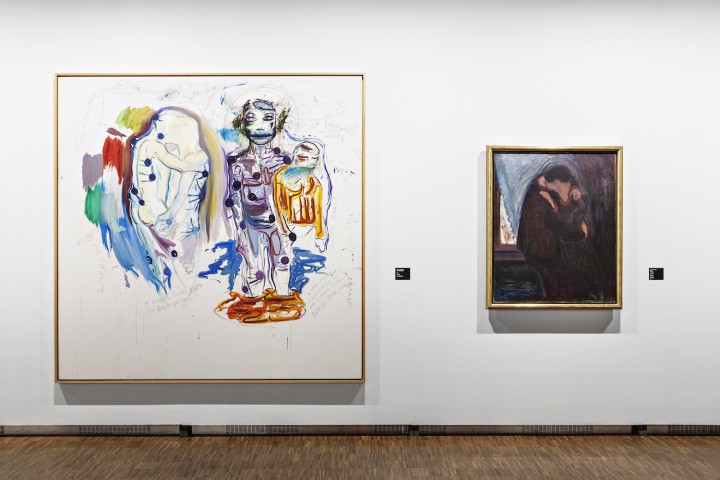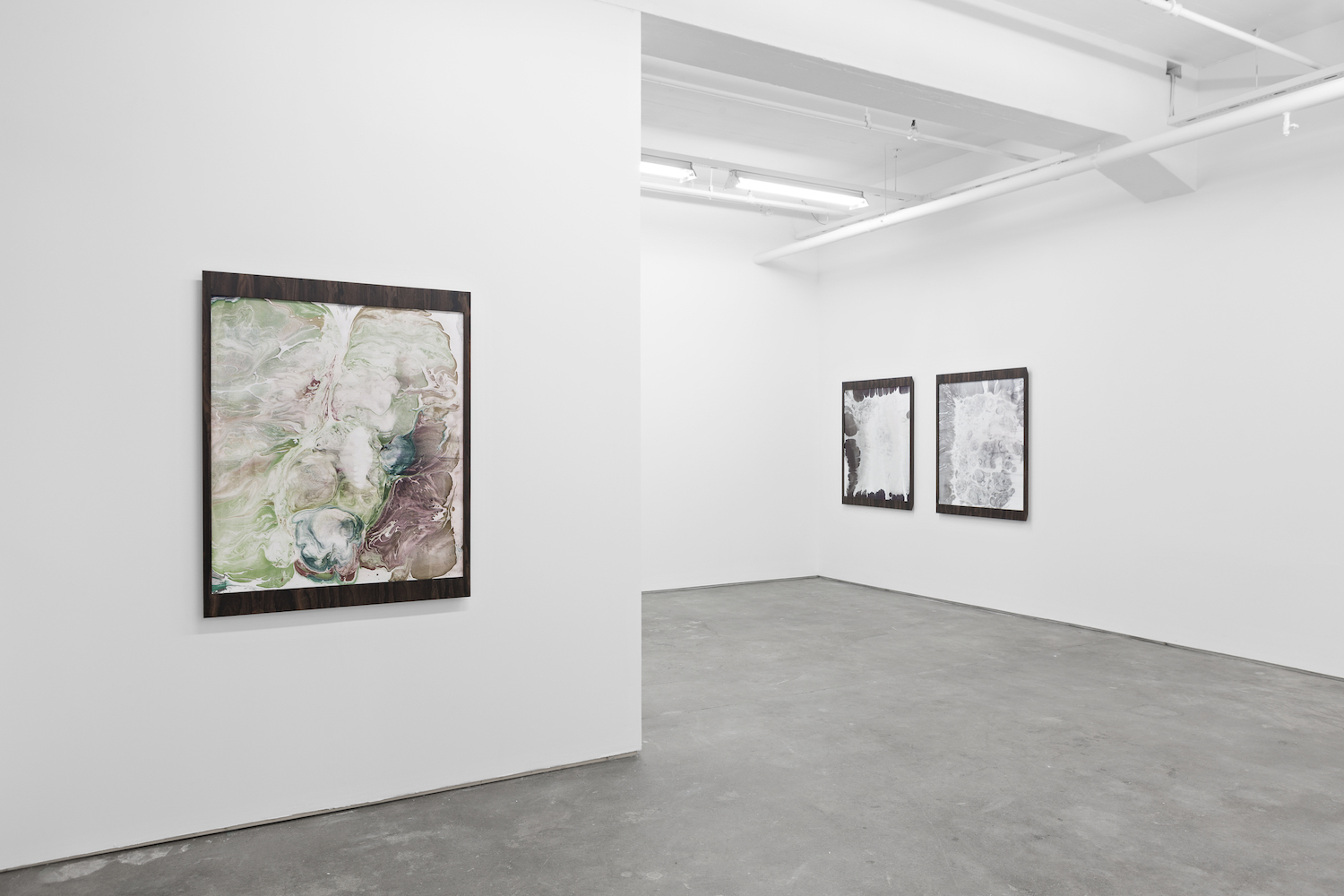What happens when a painting comes to define a nation? You cover it up. Such is the case with The Scream (1910) by Edvard Munch at the Munch Museum. Curated by Lars Toft-Eriksen, “Melgaard + Munch” brings together the work of the late painter and what could be his contemporary. Upon first glance, it is easy to compare the works of Bjarne Melgaard and Edvard Munch, but according to Toft-Eriksen’s curatorial concept, their similarities diverge before reuniting. Thematically, and maybe more emotionally than anything else, the two share a darkness. It brews like the bubbling of a caldron, just below the surface. Melgaard uses text, paint and textiles to elicit a dynamic that Munch evoked using a muted, melancholic palette. Melgaard’s texts — often painted on top of another image or drawing — usher the viewer on a particular journey, whereas Munch’s work never ventured beyond the painted form.
Intention isn’t lost on those who do not read the words. Time and societal changes may insist upon this element, but during the era of Munch, his strange and unknown forms were enough to shock. Melgaard uses a more abject strategy, tapping into literal and metaphorical territories — such as snuff films and BDSM — where Munch never ventured. Separated by two generations, obsession is where the two artists collide. Bjarne Melgaard dives head first into obsession, whether it be drugs, sex or death. Munch breached similar territory, though more topically. Bodies assimilate and, as per the artist’s choosing, identity is erased, made less important than the thrust of passion and compulsion. Both artists share a neurotic preoccupation with sex and its resulting emotional turmoil. Munch viewed these relations with a creepy, almost compulsive distance, while Melgaard proceeds with a visceral desperation. At the Munch Museum, in what could be considered one large collage, the two basically tear out their mutually aching hearts — one buried deep in the earth, the other still beating — and display the bloody masses for all present to absorb, reject or admire.






